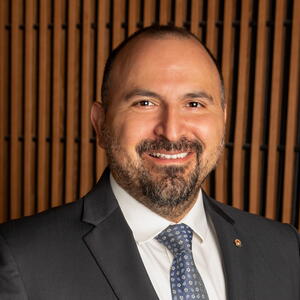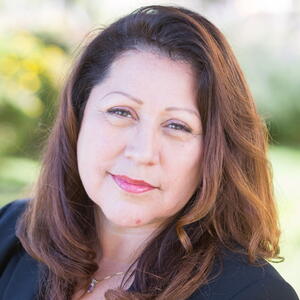
The local government workplace, long a locus of stability, is in flux like never before. With the arrival of Generation Z (Gen Z) employees, there are now four generations—millennials, Generation X, and baby boomers, as well as Gen Z—with vastly different outlooks and expectations working alongside each other.
As baby boomers retire and more than half of state and local workers are thinking of leaving their jobs, cities and counties are faced with the challenge of attracting younger workers who don’t respond to the same recruitment strategies that have worked on their predecessors. Diversity and inclusion are more important to workers than ever, but the how and why of diversity efforts vary widely based on age, race, ethnicity, geography, gender, and other factors. With the lingering impact of the COVID-19 pandemic and rapid technological changes added to the mix, local governments face both challenges and opportunities that will determine what they will look like and how they will operate for years to come.
As we observe National Hispanic Heritage Month, we spoke with members of the Local Government Hispanic Network (LGHN) for their perspectives on the state of the local government workplace, why they chose public service, and what everyone can do to strengthen the profession. With Hispanic and Latino populations growing quickly in communities across the United States, LGHN advocates for and advances the development of public service professionals at the local level, serving to create programs and services that address issues of importance to the Hispanic/Latino population. We spoke with members who have been in local government from a few years to a few decades, representing a range of generations and geographical locations, to hear their observations about the state of local government and how to make the workplace more welcoming, diverse, and effective for employees and the communities they serve.

Diana Gallego
As manager for human resources and workforce development for Tallahassee, Florida, with responsibilities that include recruitment, benefits, safety and wellness, Diana Gallego has a unique understanding of the challenges local governments face. And as a millennial Latina, she understands that an inclusive, welcoming workplace is key to the city’s recruitment and retention efforts, especially for younger people just entering the workforce.
“I’m mindful there are differences between generations, which contributes to my personal expectation of inclusion in the workplace,” Gallego says. “My city’s leadership values diversity and makes an effort to promote equity, celebrate diversity, and respect differences.”
But those values are just the start of the work instead of the end result, Gallego notes. “We need to think about how we embed our values into the processes so they don’t fall through the cracks. If your goal is to hire diverse candidates, what do you do about it? One way to do this is by establishing a diverse hiring panel with representatives from various groups—gender, race, ethnicity, and age.”
For Gallego, a comparison to private-sector hiring shows that the public sector has a ways to go when it comes to marketing itself and the positions it offers, even though it can compete well on the purpose, value, and meaning of the work. She notes that many private-sector organizations are ahead of local government when it comes to understanding what’s important to workers, conveying the benefits of working with them, and building a brand that resonates with job seekers.
“As local governments, we have an inherent challenge when it comes to attracting younger talent. We do better leaning into the branding of our organizations and strategically getting the message out about who we are,” she says.
“While older workers typically place a high value on pensions and benefits, younger workers want to find meaningful work and be able to try different things before they settle into something they want to do for a while. It’s a balance to resonate with these diverse audiences.”
As a millennial navigating the local government workplace, Gallego has found value in belonging to LGHN and appreciates the benefits it offers members in organizations across the country.
“It’s a network where most of the members are past the 10-year mark in local government, so they’ve been through a lot,” Gallego says. “When I’m going through a difficult situation and weighing pros and cons, I pick up the phone, and they’re always happy to share their experience.”
Rolando Fernandez

Rolando Fernandez came to local government after another stint in public service as a member of the U.S. Air Force—a transition that continues to influence how he sees his work for the city of Austin. For him, it’s important to develop a shared vision and mission, an understanding of the task at hand, and what the end result should look like. Once everyone on the team has committed to the mission, that’s when the different perspectives that team members bring become critical to success.
“In the military, you work with people of all ages, ethnicities, and backgrounds,” says Fernandez, who serves as deputy director for the Austin Convention Center. “They don’t necessarily train you on the importance of diversity and inclusion, but in my perspective, you have to get the job done and if you don’t, bad things happen. The military sets it up to where you lose your identity for a while—you’re a soldier or an airman; you’re part of something bigger than yourself.”
Once the shared mission is established, Fernandez says, the inclusion of different perspectives becomes critical to success, and a leader who fails to consider the opinions and ideas of others risks failure.
“If the others are different from me, I’m going to get better results,” he says. “I’m not doing my job well if I’m not including a wide range of perspectives in the process. Know that I’m going to ask you, and know that I want you to come completely prepared to contribute.”
Fernandez brings other perspectives to his understanding of public service leadership: his Mexican American identity, his status as a first-generation college student and military member, the father of three girls who is committed to seeing women achieve equality. As a member of Gen X, Fernandez has a different perspective on leadership than what was considered traditional in earlier generations.
“You can feel like there’s always something to prove, but that’s not always the case, and it can be empowering to step back and recognize that supporting my team doesn’t mean I have to be out in front all the time,” he says. “The biggest challenge is often our experience, and the things we’ve been through can make it hard to step back.”
But if Fernandez spends his days encouraging a diversity of perspectives, he also knows the value of finding people who have been through what he’s been through—and he turns to LGHN for that. He relishes the opportunity to encounter people older than him who have experience to share, people his own age to share challenges with, and younger generations he can mentor just as he was mentored.
“It’s good to have people with a different outlook in your life, and it’s also important to have people who have gone through the same journey as you,” he says. “You have to have both on your bench.”
Joe Camacho

As race equity coordinator for Adams County, Colorado, Joe Camacho understands that each generation reacts differently to issues of diversity, equity, and inclusion—both within local government and the communities they serve.
In his position, Camacho is developing, coordinating, and implementing programs in Adams County that address the racial and ethnic disparities exacerbated by the pandemic. His approach centers on community engagement and actively incorporating the perspectives of those most affected by these disparities.
Camacho, a millennial, finds that younger workers tend to understand the need for and the benefits of his work immediately, while some other employees require what he calls “a little additional onboarding” about the importance of boosting equity and opportunity across the county.
“There are people who are well intentioned but have questions like, ‘why are we focusing on race?’ But this topic that’s sometimes seen as touchy or taboo, we are calling it out as loudly as we can,” Camacho says.
“When we use a race equity lens to look at outcomes, we want to be able to break down barriers for all minoritized groups and identities, because what is a barrier for one identity is often a barrier for other identities.”
Though Camacho is new to local government, he came to the county from education, drawn by the opportunity to move into diversity, equity, and inclusion work. And while his efforts are directed externally at improving the outcomes of county residents, he understands the value of efforts internal to local government, such as LGHN, and how they carry outward to the communities that employees serve.
“When we have organizations like LGHN, NFBPA [the National Forum for Black Public Administrators], and I-NAPA [the International Network of Asian Public Administrators], they aim to increase representation and enhance employee engagement,” Camacho says. “Those of us in local government want support, community, and a sense of belonging. When we have organizations like LGHN, they give us space to connect with others like us who face similar struggles, and we learn to navigate difficult situations and uncomfortable conversations.”
Magda Gonzalez

As a 15-year-old growing up in Redwood City, California, Magda Gonzalez was placed in a summer program at a neighborhood community center to learn more about the organization and how it was run. After the summer was over, she continued working in the city government, working after school in parks and recreation, human resources, and finance.
After college and law school, Gonzalez returned to the community center—this time to manage the entire operation—before working her way up to the position of Redwood City’s deputy city manager, and later as city manager in two nearby communities. The lesson, she says, is about knowing what a little encouraging nudge can mean to someone who might not be expecting it.
“Someone took an interest in me as this little brown girl and it made all the difference in the world,” says Gonzalez, who was required in high school to keep her grades up as a condition of her work for the city. “For them it wasn’t a big deal, but for me, it changed my life.”
Gonzalez, now a public sector advisory consultant with Baker Tilly and a past president of LGHN, is part of the Baby Boom generation that’s beginning to retire from local government after occupying positions of leadership over the past few decades. Gonzalez served as city manager for the California cities of East Palo Alto and Half Moon Bay, starting at a time when women were even less represented in the top jobs than they are today.
While Gonzalez worked for leaders who valued diversity in a county that always had a lot of female leaders, Gonzalez remembers going to conferences and meetings and understanding how different her perspective was as a Latina in a sector where many leadership positions were held by older white men.
Once she became a city manager herself, Gonzalez prioritized work that broadened community input and gave access to populations that had been traditionally marginalized. Her efforts included providing simultaneous translation of meetings and starting citizen academies to build civic engagement—running one academy in Spanish and another in English to increase representative participation.
“We as local government have to meet people where they are,” she says. “The traditional outreach methods don’t work for everybody, and they may not work for anybody. If the goal is to get more voices involved; what does that look like versus checking boxes and saying, well, we had two meetings.”
To Gonzalez, making communities welcoming and diverse requires them to truly reflect their residents. She points to the way that police and fire jobs often attract generations of the same family because people see from a young age what the benefits and responsibilities of the job are. She’d like to ensure that women and people of color are afforded these opportunities, just as teenage Magda was years ago.
“You can’t be what you don’t see,” she says. “Our local governments don’t reflect our communities, so how do we change that, especially at the top? Having people with different perspectives and being cognizant of how that improves a community really makes a difference.”

SAMANTHA TAVARES is president of the Local Government Hispanic Network. She is also a special projects administrator in the city manager’s office of Phoenix, Arizona.
New, Reduced Membership Dues
A new, reduced dues rate is available for CAOs/ACAOs, along with additional discounts for those in smaller communities, has been implemented. Learn more and be sure to join or renew today!
